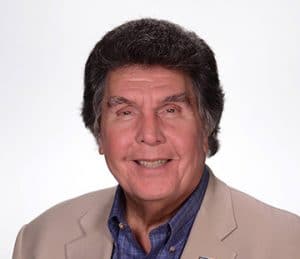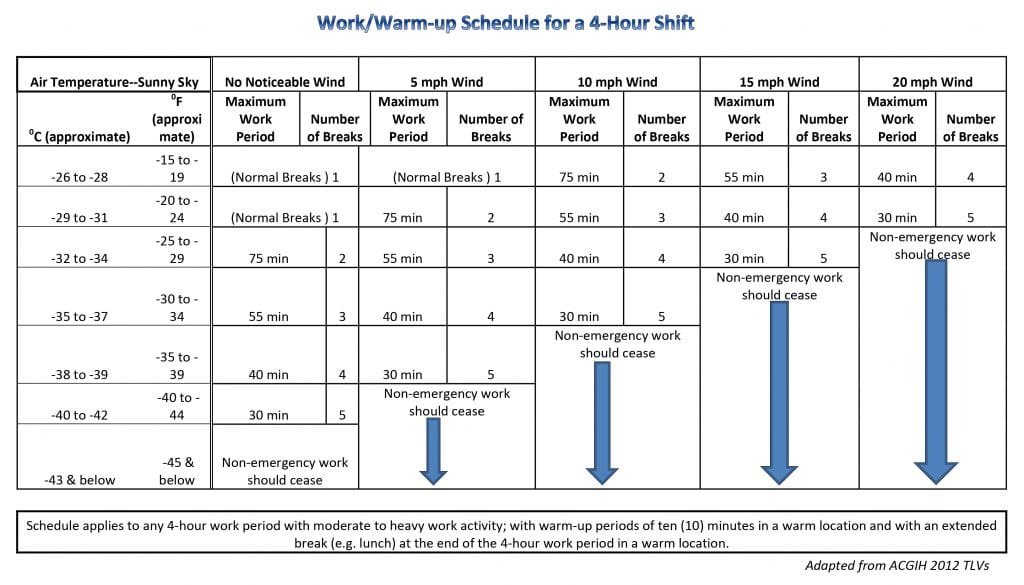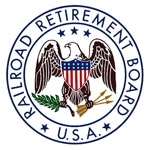
As a result, certain railroad employers and employees who previously paid railroad retirement taxes based on the exercise of such stock options may be eligible for tax refunds through the Internal Revenue Service (IRS).
Railroad employees and railroad retirement annuitants considering filing for such a tax refund should know that doing so may reduce the amount of their total creditable railroad compensation. Under the Railroad Retirement Act (RRA), creditable compensation is a factor in the computation of a railroad retirement annuity. A reduction in compensation could cause a reduction in an annuitant’s monthly benefit rate, and may result in an overpayment. For active employees, a change in creditable compensation may impact any estimated annuity amounts they were previously given by the Railroad Retirement Board (RRB).
At this time, the RRB is able to provide guidance to only a select group of individuals trying to determine if their total creditable railroad compensation will be reduced and/or if their annuity amounts will change as a result of claiming refunds of taxes paid on non-qualified stock options. That group is comprised of those individuals who have been identified by their railroad employers as employees whose regular earnings met the maximum compensation taxable caps without the inclusion of the stock option payment. In those cases, if the employees file claims for refunds of taxes paid on the stock option payment, payment of the refund will not impact their annuity rate computations. Employees who believe they are members of this group should review their consent letters to confirm whether they have been reported by their employers to be a “Medicare Tax Only” employee. If you are uncertain whether you are a “Medicare Tax Only” employee, please contact your railroad employer. Employees may also call the RRB’s toll-free number at 877-772-5772 if there are any other questions.
The RRB is currently unable to provide guidance to individuals not in the above group. The agency’s three-member board (appointed by the President with the advice and consent of the Senate, and representing rail labor, rail management and the public interest) has the authority to determine what effect, if any, the court’s decision will have on the RRB’s administration of the RRA. However, the position of chairman of the board is currently vacant, and the management member of the board must recuse himself from this issue as he previously worked for a railroad and received non-qualified stock options. The labor member of the board alone lacks statutory authority to make a decision, as a two-member quorum is required by law.
It is expected that in the first quarter of 2019, the agency will get a three-member board in place that will be able to make policy decisions related to this matter. The RRB is currently in discussions with the IRS to determine if it is possible to hold open the period for railroad employees and retirees to file claims for tax refunds until such time as the RRB gets a three-member board in place. The RRB would then be better able to provide information regarding the effect on RRB benefits to those needing assistance.
Read more about how to apply for the refunds and court decision.
Author: amyr

The following questions and answers provide information about the RRB’s performance in the key areas of retirement applications, survivor applications, disability applications and payments, and railroad unemployment and sickness benefit applications and claims during fiscal year 2018 (October 1, 2017 – September 30, 2018). Included are the customer service performance goals the RRB set for fiscal year 2018. These goals may be revised annually based on such factors as projected workloads and available resources. Also included is information on the RRB’s overall performance, as measured by the timeliness index developed by the agency.
1. How does the RRB measure overall timeliness for customer service?
The RRB developed an index to measure overall timeliness of its customer service in four benefit areas: retirement applications; survivor applications; disability applications and payments; and railroad unemployment and sickness benefit applications and claims. This composite indicator, based on a weighted average, allows for a more concise and meaningful presentation of its customer service efforts in these benefit areas.
2. How timely, overall, was the customer service provided by the RRB in fiscal year 2018, as measured by this timeliness index?
During fiscal year 2018, the overall benefit timeliness index was 98.8 percent. This means that the RRB provided benefit services within the timeframes promised in the customer service plan 98.8 percent of the time. The timeliness index for retirement applications, survivor applications, disability applications and payments only, the processing of which includes considerable manual intervention, is 91.4 percent, whereas the timeliness index for railroad unemployment and sickness benefit applications and claims only, a highly automated process, is 99.9 percent. More detailed performance information for specific benefit areas is presented in the questions and answers that follow.
3. What standards were used by the RRB in fiscal year 2018 for processing applications for Railroad Retirement annuities and how well did it meet those standards?
Under RRB’s standards, if you filed an application for a Railroad Retirement annuity in advance, the RRB will make a decision to pay or deny the application within 35 days of the beginning date of your annuity. If you have not filed in advance, the RRB will make a decision within 60 days of the date you filed your application.
Of the cases processed during fiscal year 2018, the RRB made a decision within 35 days of their annuity beginning dates on 94.9 percent of applicants who filed in advance. The average processing time for these cases was 14.7 days.
Also, of the cases processed during fiscal year 2018, the RRB made a decision within 60 days of their filing dates on 96.5 percent of applicants who had not filed in advance. In these cases, the average processing time was 21.1 days.
The RRB’s goals in fiscal year 2018 were 94 percent timeliness both for persons filing in advance and persons not filing in advance.
4. What standards were used in the area of survivor benefits in fiscal year 2018?
Under the standards, if you filed for a Railroad Retirement survivor annuity and you were not already receiving benefits as a spouse, the RRB will make a decision to pay, deny or transfer your application to the Social Security Administration within 60 days of the beginning date of your annuity or the date the application is filed, whichever is later. If you are already receiving a spouse annuity, the RRB will make a decision to pay, deny or transfer your application for a survivor annuity to the Social Security Administration within 30 days of the first notice of the employee’s death. If you filed for a lump-sum death benefit, the RRB will make a decision to pay or deny your application within 60 days of the date the application is filed.
Of the cases considered during fiscal year 2018, the RRB made a decision within 60 days of the later of the annuity beginning date or the date the application was filed in 96.2 percent of the applications for an initial survivor annuity. In cases where the survivor was already receiving a spouse annuity, a decision was made within 30 days of the first notice of the employee’s death in 96.5 percent of the cases. In addition, a decision was made within 60 days of the date the application was filed in 98.2 percent of the applications for a lump-sum death benefit. The combined average processing time for all initial survivor applications and spouse-to-survivor conversions was 12.95 days. The average processing time for lump-sum death benefit applications was 10.2 days.
The goals for fiscal year 2018 were 94 and 93.5 percent timeliness, respectively, for processing initial survivor applications and spouse-to-survivor conversions. For processing applications for lump-sum death benefits, the goal was 97 percent.
5. What standards were used by the RRB in fiscal year 2018 for processing applications for disability annuities under the Railroad Retirement Act?
Under the customer service plan, if you filed for a disability annuity, the RRB will make a decision to pay or deny a benefit within 100 days of the date you filed your application. If it is determined that you are entitled to disability benefits, you will receive your first payment within 25 days of the date of the RRB’s decision, or the earliest payment date, whichever is later.
Of the cases processed during fiscal year 2018, the RRB made a decision within 100 days of the date an application was filed on 11.3 percent of those filing for a disability annuity. The average processing time was 330.9 days. Of those entitled to disability benefits, 91.5 percent received their first payment within the Customer Service Plan’s time frame. The average processing time was 12.8 days.
The agency’s goals were 70 percent and 93.5 percent timeliness, respectively, for disability decisions and disability payments.
6. What were the standards for the handling of applications and claims for railroad unemployment and sickness benefits and how well did the RRB meet these standards?
Under the standards, if you filed an application for unemployment or sickness benefits, the RRB will release a claim form or a denial letter within 10 days of receiving your application. If you filed a claim for subsequent biweekly unemployment or sickness benefits, the RRB will certify a payment or release a denial letter within 10 days of the date the RRB receives your claim form.
During fiscal year 2018, 99.5 percent of unemployment benefit applications sampled for timeliness and 99.3 percent of sickness benefit applications processed met the RRB’s standard. Average processing times for unemployment and sickness benefit applications were 0.8 and 1.9 days, respectively.
In addition, 99.9 percent of subsequent claims processed for unemployment and sickness benefits met the RRB’s standard for fiscal year 2018. The average processing time for claims was 4.3 days.
The agency’s goals for processing unemployment and sickness applications in fiscal year 2018 were, respectively, 99.5 and 99.3 percent timeliness. The payment or decision goal for subsequent claims was 98 percent timeliness.
7. How did the RRB’s performance in meeting its standards in fiscal year 2018 compare to its performance in fiscal year 2017?
Fiscal year 2018 performance met or exceeded fiscal year 2017 performance in the areas of retirement benefits not filed in advance, spouse-to-survivor conversions, lump-sum death benefit applications, and unemployment and sickness benefit claims.
Average processing times in fiscal year 2018 equaled or improved fiscal year 2017 processing times in the areas of Railroad Retirement applications filed in advance, initial survivor applications, spouse-to-survivor conversions, unemployment applications and unemployment and sickness benefit claims. Also, for fiscal year 2018, the agency met or exceeded all of the customer service performance goals it had set for the year, except in the areas of disability decisions and disability payments.
8. Can beneficiaries provide feedback to the RRB about the service they receive?
A customer assessment survey form allowing beneficiaries to evaluate the service they received and suggest how the agency can improve its service is available in every field office. Persons not satisfied with the service they received may also contact the manager of the office with which they have been dealing.
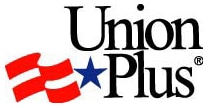
Applicants are evaluated according to academic ability, social awareness, financial need and appreciation of labor. A GPA of 3.0 or higher is recommended, and the required essays account for up to half of your total score. Applications are judged by a committee of impartial post-secondary educators.
Isaiah’s Award Introduced
This year Union Plus has also introduced Isaiah’s Award for students who have a connection with the foster care system. Those applying will be asked to describe their personal, employment, volunteer experiences or career goals related to the foster care system.
Scholarship award recipients will be chosen by no later than May 31 and winners will be notified by mail during the first week of June.
The Union Plus Education Foundation has awarded more than $4.3 million in scholarships to students of union families and over 2,900 families have benefited.
For other eligibility requirements, click here and scroll down to the bottom of the page and click on the “Eligibility” tab, located next to the “How it Works” tab.
Click here to apply.
State Legislative Director Carl Smith is urging all members from Colorado to contact their state representatives and ask them to support the state’s two-person crew bill, H.B. 1034. Smith says that members, their families and friends are encouraged to visit www.corailsafe.com to contact their legislators about supporting this bill.
Better yet, union members can come out in person to express their support, Smith said.
The bill, which was introduced Jan. 4 by state Reps. Tom Sullivan and Daneya Esgar, is set to be heard by the House Transportation Committee at 1 p.m. Wednesday, Jan. 30 at the Colorado State Capitol, 200 East Colfax, Denver.
“We will meet in the basement at 11:30 a.m.,” Smith said. “You and everyone you know that cares about railroad safety must contact your state legislator by phone, letter or email before this date to tell them to support H.B. 1034. We need everyone! You, your family, your friends and neighbors.
“It will take all of us.”
Click here to contact your legislators.
Click here to view the members that sit on Colo. House Transportation Committee.
On Jan. 9, the Colorado State Legislative Board released the results of a survey that showed strong support among Coloradans for a law requiring two-person crews. The survey, conducted Jan. 2 – Jan. 5, 2019, asked 550 random Colorado residents older than 18 using both cell phones and landlines about issues centered around railroad safety. The results showed that 77 percent of Coloradans said that, given the chance, they would vote in favor of a two-person crew law.
“More than three of four respondents to this poll understand the safety benefits of having more than one person operating a freight train. Safety is a top priority for them and requiring all trains in the state to be operated by a crew of at least two people, no exceptions, makes perfect sense,” Smith said in a press release about the survey results.
To keep the state’s rails safe, legislators need to hear about the importance of keeping two people operating freight trains. Now is your chance to make your voice heard!
Retired New Jersey State Legislative Director Daniel O’Connell recently won a runoff election for Burlington County freeholder.
According to the New Jersey Globe, O’Connell defeated contender Gina LaPlaca by 10 votes, 190-180, in the election that took place Jan. 19.
“I want to thank everybody that helped me, especially my Delran political family … I couldn’t have done any of this without you,” O’Connell said in a statement to the New Jersey Globe.
Freeholders in New Jersey hold a position similar to county commissioners in other states. The term goes back to New Jersey’s colonial roots.
O’Connell won re-election as a Delran Township councilman this past November. With his election as freeholder, O’Connell is required to step down from that seat.
O’Connell’s term as freeholder begins immediately, and he will have to run for election to fill the remaining two years of the term on the November ballot.
“Working for the UTU/SMART TD, along with our affiliation with the NJ State AFL-CIO, showed me the importance of having rank and file union members serve in a variety of elected offices,” O’Connell told SMART TD. “From school boards to city, county, state and even federal office, it shows people that we — union members — have something to offer our communities and helps show that — unlike how some would portray us — we’re not greedy, self-centered people, but that we care about others.”
Click here to read more from the New Jersey Globe.
Donald “Donnie” Wheaton Jr., 62, died unexpectedly Saturday, Jan. 19.
Hiring out with the Massachusetts Bay Commuter Railroad – now Keolis – Wheaton served as a conductor. He was a 42-year employee.
Wheaton became a member of the United Transportation Union Local 898 (Boston, Mass.) in July 1979. He served his union as local chairperson (LCA 769B) – a position he’d held since November 1998; local delegate (April 2004 – present); local legislative representative (April 2004 – present); and New England legislative vice chairperson (2004 to 2012). He was elected to the position of alternate New England legislative director and began serving in May 2016.
“Donald was the very definition of selfless, giving many hours of his time as a local officer and later as an officer on the New England Legislative Board to serve and protect our members,” SMART Transportation Division President John Previsich said. “His two decades as a devoted leader in Local 898 made his brothers and sisters safer and our union stronger.
“His counsel and presence will be sharply missed. He was an excellent officer, a good friend and a shining example of what it means to be a union member. I offer my heartfelt condolences to his wife, Kathleen, his friends and relatives, and Local 898 in Boston. Donald will be sincerely and deeply missed at all levels of SMART Transportation Division.”
David Scorey, CEO of Keolis, also offered condolences.
“He was passionate about his role and dedicated himself to ensuring employees’ voices were heard,” Scorey said. “A true gentleman, Donnie was always working for the good of the railroad and the benefit of his colleagues. He will be very sorely missed.
“Our heartfelt condolences are extended to Donnie’s family and friends.”
As a tribute to Wheaton, a lifelong fan of the New England Patriots and a season-ticket holder, the MBTA announced that it was renaming the identifying name of the interlocking near Foxboro, home of the Patriots, to Wheaton from the previous identifier “GOAT.”
Wheaton is survived by Kathleen; niece Jill Mullen and her husband Nicholas Machado and their children, Hayden and Cameron; a sister, Donna (Michael) Furman; sister-in-law Patricia (Edward) Meyertholen; brother-in-law Robert (Charlotte) Mullen; nieces Andrea Meyertholen, Kristin (Nick) Favela, Sarah Mullen; nephew Rob Mullen; aunts Peggy (Kenny) Bukoski and Mary Jane Mahoney; uncle William Wheaton; and many other aunts, uncles, nieces, nephews, cousins, friends and his railroad brothers and sisters.
Family and friends may visit at the McDonald-Finnegan Funeral Home, 322 Main St., Stoneham, MA 02180 on Thursday, Jan. 24 from 4 – 8 p.m. A funeral will be 8 a.m. Friday, Jan. 25 at McDonald-Finnegan Funeral Home with a funeral Mass to follow at 9 a.m. at St. Patrick Church, 71 Central St., Stoneham, MA 02180. Interment will be at the Lindenwood Cemetery in Stoneham.
SMART TD extends condolences to the family, friends, Local 898 and all who knew Wheaton.
Click here to view Wheaton’s official obituary and to leave condolences.
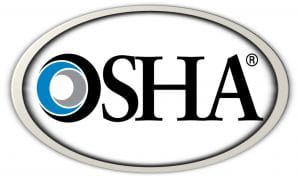
OSHA and National Oceanic and Atmospheric Administration (NOAA) are working together on a public education effort aimed at improving the way people prepare for and respond to severe weather.
Cold stress
It is important for employers to know the wind chill temperature so that they can gauge workers’ exposure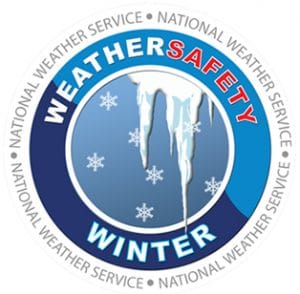
The NOAA Weather Radio is a nationwide network of radio stations broadcasting continuous weather information from the nearest NWS office. It will give information when wind chill conditions reach critical thresholds. A Wind Chill Warning is issued when wind chill temperatures are life-threatening. A Wind Chill Advisory is issued when wind chill temperatures are potentially hazardous.
Who is affected by environmental cold?
Risk factors for cold stress include:
- Wetness/dampness, dressing improperly and exhaustion
- Predisposing health conditions such as hypertension, hypothyroidism and diabetes
- Poor physical conditioning
What constitutes cold stress and its effects can vary across different areas of the country. In regions that are not used to winter weather, near freezing temperatures are considered factors for “cold stress.” Increased wind speed also causes heat to leave the body more rapidly (wind chill effect). Wetness or dampness, even from body sweat, also facilitates heat loss from the body. Cold stress occurs by driving down the skin temperature, and eventually the internal body temperature. When the body is unable to warm itself, serious cold-related illnesses and injuries may occur, and permanent tissue damage and death may result. Types of cold stress include: trench foot, frostbite and hypothermia.
For more information, see OSHA’s Cold Stress Safety and Health Guide.
Trench foot is a non-freezing injury of the feet caused by prolonged exposure to wet and cold conditions. It can occur in temperatures as high as 60°F if feet are constantly wet. Injury occurs because wet feet lose heat 25-times faster than dry feet.
What are they symptoms of trench foot?
Reddening skin, tingling, pain, swelling, leg cramps, numbness and blisters.
First Aid
- Call 911 immediately in an emergency; otherwise seek medical assistance as soon as possible.
- Remove wet shoes/boots and wet socks.
- Dry the feet and avoid working on them.
- Keep affected feet elevated and avoid walking. Get medical attention.
Frostbite is caused by the freezing of the skin and tissues. Frostbite can cause permanent damage to the body, and in severe cases can lead to amputation. The risk of frostbite is increased in people with reduced blood circulation and among people who are not dressed properly for extremely cold temperatures.
What are the symptoms of frostbite?
Reddened skin develops gray/white patches in the fingers, toes, nose, or ear lobes; tingling, aching, a loss of feeling, firm/hard, and blisters may occur in the affected areas.
First Aid
- Follow the recommendations described below for hypothermia.
- Protect the frostbitten area, e.g., by wrapping loosely in a dry cloth and protect the area from contact until medical help arrives.
- DO NOT rub the affected area, because rubbing causes damage to the skin and tissue.
- Do not apply snow or water. Do not break blisters.
- DO NOT try to re-warm the frostbitten area before getting medical help, for example, do not use heating pads or place in warm water. If a frostbitten area is rewarmed and gets frozen again, more tissue damage will occur. It is safer for the frostbitten area to be rewarmed by medical professionals.
- Give warm sweetened drinks if alert (no alcohol).
Hypothermia occurs when the normal body temperature (98.6°F) drops to less than 95°F. Exposure to cold temperatures causes the body to lose heat faster than it can be produced. Prolonged exposure to cold will eventually use up the body’s stored energy. The result is hypothermia, or abnormally low body temperature. Hypothermia is most likely at very cold temperatures, but it can occur even at cool temperatures (above 40°F) if a person becomes chilled from rain, sweat, or immersion in cold water.
What are the symptoms of hypothermia?
An important mild symptom of hypothermia is uncontrollable shivering, which should not be ignored. Although shivering indicates that the body is losing heat, it also helps the body to rewarm itself. Moderate to severe symptoms of hypothermia are loss of coordination, confusion, slurred speech, heart rate/breathing slow, unconsciousness and possibly death. Body temperature that is too low affects the brain, making the victim unable to think clearly or move well. This makes hypothermia particularly dangerous because a person may not know what is happening and won’t be able to do anything about it.
First Aid
- Call 911 immediately in an emergency.
- Move the worker to a warm, dry area.
- Remove any wet clothing and replace with dry clothing. Wrap the entire body (including the head and neck) in layers of blankets; and with a vapor barrier (e.g. tarp, garbage bag) Do not cover the face.
If medical help is more than 30 minutes away:
- Give warm sweetened drinks if alert (no alcohol), to help increase the body temperature. Never try to give a drink to an unconscious person.
- Place warm bottles or hot packs in armpits, sides of chest, and groin. Call 911 for additional rewarming instructions.
Co-workers trained in cardiopulmonary resuscitation (CPR) may help a person suffering from hypothermia who has no pulse or is not breathing:
- Call 911 for emergency medical assistance immediately.
- Treat the worker as per instructions for hypothermia, but be very careful and do not try to give an unconscious person fluids.
- Check him/her for signs of breathing and for a pulse. Check for 60 seconds.
- If after 60 seconds the affected worker is not breathing and does not have a pulse, trained workers may start rescue breaths for 3 minutes.
- Recheck for breathing and pulse, check for 60 seconds.
- If the worker is still not breathing and has no pulse, continue rescue breathing.
- Only start chest compressions per the direction of the 911 operator or emergency medical services*
- Reassess patient’s physical status periodically.
*Chest compressions are recommended only if the patient will not receive medical care within 3 hours.
Wind Chill Temperature
Outdoor workers exposed to cold and windy conditions are at risk of cold stress, both air temperature and wind speed affect how cold they feel. “Wind chill” is the term used to describe the rate of heat loss from the human body, resulting from the combined effect of low air temperature, and wind speed. The wind chill temperature is a single value that takes both air temperature and wind speed into account. For example, when the air temperature is 40°F, and the wind speed is 35mph, the wind chill temperature is 28°F; this measurement is the actual effect of the environmental cold on the exposed skin.
National Weather Service (NWS) Wind Chill Calculator: With this tool, one may input the air temperature and wind speed, and it will calculate the wind chill temperature.
The American Conference of Governmental Industrial Hygienists (ACGIH) developed the following Work/Warm-up Schedule for a 4-hour shift that takes both air temperature and wind speed into account to provide recommendations on scheduling work breaks and ceasing non-emergency work.
Dressing Properly for the Cold
Dressing properly is extremely important to preventing cold stress. When cold environments or temperatures cannot be avoided, the following would help protect workers from cold stress:
- Wear at least three layers of loose-fitting clothing. Layering provides better insulation.
- An inner layer of wool, silk or synthetic (polypropylene) to keep moisture away from the body. Thermal wear, wool, silk or polypropylene, inner layers of clothing that will hold more body heat than cotton.
- A middle layer of wool or synthetic to provide insulation even when wet.
- An outer wind and rain protection layer that allows some ventilation to prevent overheating.
- Tight clothing reduces blood circulation. Warm blood needs to be circulated to the extremities. Insulated coat/jacket (water resistant if necessary)
- Knit mask to cover face and mouth (if needed)
- Hat that will cover your ears as well. A hat will help keep your whole body warmer. Hats reduce the amount of body heat that escapes from your head.
- Insulated gloves (water resistant if necessary), to protect the hands
- Insulated and waterproof boots to protect the feet
- Your employer should ensure that you know the symptoms of cold stress
- Monitor your physical condition and that of your coworkers
- Dress appropriately for the cold
- Stay dry in the cold because moisture or dampness, e.g. from sweating, can increase the rate of heat loss from the body
- Keep extra clothing (including underwear) handy in case you get wet and need to change
- Drink warm sweetened fluids (no alcohol)
- Use proper engineering controls, safe work practices, and personal protective equipment (PPE) provided by your employer
Winter driving
Although employers cannot control roadway conditions, they can promote safe driving behavior by ensuring workers recognize the hazards of winter weather driving, for example, driving on snow/ice covered roads; are properly trained for driving in winter weather conditions; and are licensed (as applicable) for the vehicles they operate. For information about driving safely during the winter, visit OSHA’s Safe Winter Driving page.
Employers should set and enforce driver safety policies. Employers should also implement an effective maintenance program for all vehicles and mechanized equipment that workers are required to operate. Crashes can be avoided. Learn more at the Motor Vehicle Safety (OSHA Safety and Health Topics Page) .
Employers should ensure properly trained workers inspect the following vehicle systems to determine if they are working properly:
- Brakes: Brakes should provide even and balanced braking. Also check that brake fluid is at the proper level.
- Cooling system: Ensure a proper mixture of 50/50 antifreeze and water in the cooling system at the proper level.
- Electrical system: Check the ignition system and make sure that the battery is fully charged and that the connections are clean. Check that the alternator belt is in good condition with proper tension.
- Engine: Inspect all engine systems.
- Exhaust system: Check exhaust for leaks and that all clamps and hangers are snug.
- Tires: Check for proper tread depth and no signs of damage or uneven wear. Check for proper tire inflation.
- Oil: Check that oil is at proper level.
- Visibility systems: Inspect all exterior lights, defrosters (windshield and rear window), and wipers. Install winter windshield wipers.
An emergency kit with the following items is recommended in vehicles:
- Cell phone or two-way radio
- Windshield ice scraper
- Snow brush
- Flashlight with extra batteries
- Shovel
- Tow chain
- Traction aids (bag of sand or cat litter)
- Emergency flares
- Jumper cables
- Snacks
- Water
- Road maps
- Blankets, change of clothes
Preventing slips on snow and ice
To prevent slips, trips, and falls, employers should clear snow and ice from walking surfaces, and spread deicer as quickly as possible after a winter storm. When walking on snow or ice is unavoidable workers should be trained to:
- Wear footwear that has good traction and insulation (e.g. insulated and water-resistant boots or rubber over-shoes with good rubber treads)
- Take short steps and walk at a slower pace to react quickly to changes in traction
On Dec. 28, 2018, the Federal Railroad Administration (FRA) published its determination of minimum random drug and alcohol testing rates for 2019 for covered service employees and Maintenance of Way (MOW) employees in the Federal Register.
FRA determined that the minimum annual random testing rates for covered service employees will stay at 25 percent for drugs and 10 percent for alcohol. The minimum rates for MOW employees will stay at 50 percent for drugs and 25 percent for alcohol.
To set its minimum testing rates each year, FRA examines data submitted to its Management Information System (MIS) for the last two complete calendar years.
FRA said that the rail industry’s random drug testing positive rate for covered service employees (employees subject to hours of service regulations) remained below 1.0 percent and 0.5 percent for alcohol testing violations for 2016 and 2017, allowing for the FRA administrator to determine that testing rates should remain the same. Testing for MOW employees began in June 2017 and the FRA stated that it needs more data before rates are adjusted.
It’s worth noting that the rates do not include data from testing for opioids as that testing began Jan. 1, 2018. Data from the testing for opioids will be included in next year’s rates.
The new rates for service and MOW employees are in effect Jan. 1, 2019, to Dec. 31, 2019. It should be noted that because these rates set by the FRA represent minimums, railroads may choose to test above the set rates.
Click here to read the official notice published in the Federal Register.
Jeffrey Keith Hague, 34, died Sunday, Dec. 30, 2018, as the result of a railroad accident in Oakley, Kan.
Hague was a conductor for Union Pacific and a member of Local 495 (Salina, Kan.) since 2012.
Hague was the salutatorian of his 2002 graduating class. He went on from high school to receive an associate’s degree from North Central Missouri College and then earned a bachelor’s degree in biology from Missouri Western University. An avid outdoorsman, he enjoyed hunting, fishing and doing farm work.
Hague is survived by his parents, Dale and Kelly Hague; his significant other, Sabrina Jones, and her children, Tyler and Tydus Jones; a brother, Jason Hague, a sister, Krista Hague, a nephew, Marshall Hague; his uncles, Dean (Linda) Hague, Don Hague and Dan (Theresa) Wollenzien; his aunts, Tracy Detwiler, Susanne (Eddie) Crawford and Melissa (Tony) McNear; a step-grandfather, Richard Foster; a step uncle, Steve Foster; as well as numerous cousins and friends.
Hague was preceded in death by his paternal grandparents, Dale and Shirley Hague; and his maternal grandparents, August Wollenzien and Carolyn Foster.
Visitation is 6 to 8 p.m. Wednesday, Jan. 2, at the Trinity Lutheran Church, 702 S. 9th St., Salina, KS 67401. Another visitation will be 6 to 8 p.m. Friday, Jan. 4, at the Immanuel Lutheran Church, 1711 Hillcrest Dr., Trenton, MO 64683. A funeral service will be 1 p.m. Saturday, Jan. 5 at Immanuel Lutheran Church. Burial will follow at the Half Rock Cemetery in Half Rock, Mo.
Memorial donations may be made to the Half Rock Cemetery Fund or to Immanuel Lutheran Church.
SMART TD expresses great sorrow at this tragic loss and extends condolences to the family, friends, local and all who knew Hague.
Click here to leave condolences for the family.
Two SMART Transportation Division members from Local 524 in Palestine, Texas, were given the privilege by Union Pacific Railroad (UP) to serve their country as conductors on President George H.W. Bush’s funeral train, Thursday, Dec. 6.
The funeral procession consisted of two trains. The lead train, operated by BLET Division 139 locomotive engineer Aaron Braud and SMART TD Local 524 conductor Laymon “Billy” Blanton, consisted of 10 passenger cars and two locomotives and carried dignitaries and part of the Secret Service detail.
Although he didn’t get to interact with any of the family or many of the dignitaries, Blanton said that the crew was in constant contact with the Secret Service, with Service agents pointing out possible problem areas along the route.
The second train, led by UP locomotive No. 4141 — “The George Bush Presidential Library and Museum engine,” was operated by BLET Division 139 locomotive engineer June Nobles and SMART TD Local 524 conductor Randy Kuhaneck, both whom — like the late president — are Navy veterans. This train, consisting of two locomotives and 11 cars, carried members of Bush’s family as well as his casket in car six.
The 2 1/2-hour journey began in Spring, Texas, and traveled 70 miles to President Bush’s final resting place in College Station, Texas, at his presidential library. The funeral train had been in the works since 2009, when federal officials contacted UP and asked, at Bush’s request, if they could provide the funeral train.
“We said, ‘Of course, and also we have this locomotive that we would want to have obviously be a part of it,'” UP spokesperson Tom Lange told CBS News.
This wasn’t the first time that Blanton had served on a special train. He said he’s crewed trains carrying UP executives as well as holiday trains and charity trains in the past.
Blanton said that the experience of doing his job on special trains is always tense, and the funeral train was one of his most stressful experiences on the rails.
“The past four days have been nerve-wracking. That was the most stressful thing I’ve done, bar none,” Blanton said. “You got the face of the company behind you on that deal. The whole nation and world was watching. Nothing could go wrong.”
Despite the stress that came with it, Blanton said he was honored to be part of the crew.
“I was just tickled to be picked. It was such an honor to serve UP, the nation and especially the Bush family,” he said. “Now I’m glad I did it. My family got to be there to see it and to be a part of history along with me.
“It was all quite the spectacle. I saw some things that I thought only ever happens on TV. It was a really neat experience,” he said.
Blanton also said he was proud to represent his union and said that this was a great chance for SMART TD conductors to shine.
“I love being a conductor,” Blanton said. “I could’ve been an engineer years ago, but I love the job of conductor. I like being on the ground and in charge. I’m proud to be a union guy.”
SMART TD is proud to represent you and congratulates you and Kuhaneck on this momentous occasion and a job well done.

